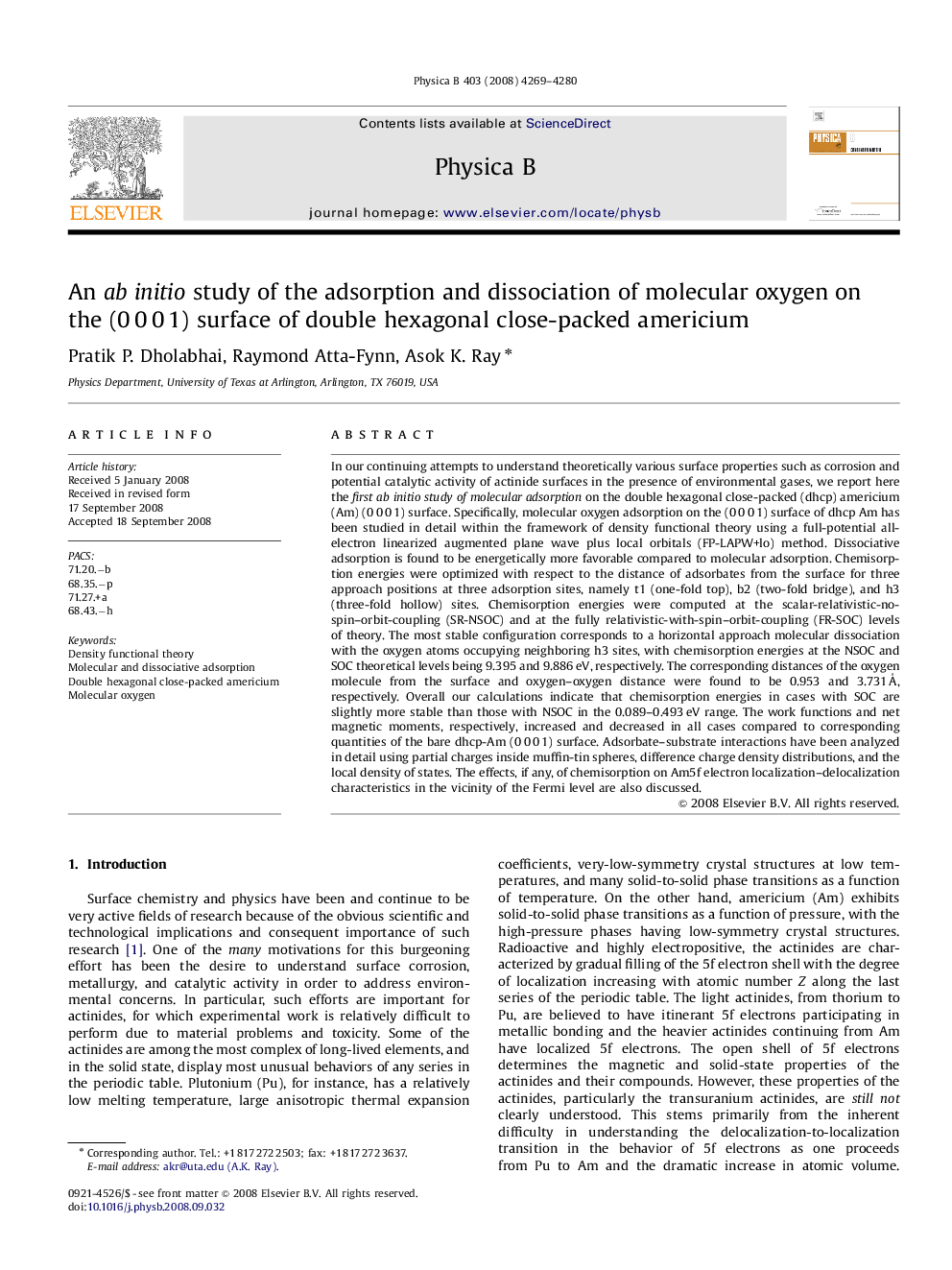| Article ID | Journal | Published Year | Pages | File Type |
|---|---|---|---|---|
| 1812812 | Physica B: Condensed Matter | 2008 | 12 Pages |
Abstract
In our continuing attempts to understand theoretically various surface properties such as corrosion and potential catalytic activity of actinide surfaces in the presence of environmental gases, we report here the first ab initio study of molecular adsorption on the double hexagonal close-packed (dhcp) americium (Am) (0Â 0Â 0Â 1) surface. Specifically, molecular oxygen adsorption on the (0Â 0Â 0Â 1) surface of dhcp Am has been studied in detail within the framework of density functional theory using a full-potential all-electron linearized augmented plane wave plus local orbitals (FP-LAPW+lo) method. Dissociative adsorption is found to be energetically more favorable compared to molecular adsorption. Chemisorption energies were optimized with respect to the distance of adsorbates from the surface for three approach positions at three adsorption sites, namely t1 (one-fold top), b2 (two-fold bridge), and h3 (three-fold hollow) sites. Chemisorption energies were computed at the scalar-relativistic-no-spin-orbit-coupling (SR-NSOC) and at the fully relativistic-with-spin-orbit-coupling (FR-SOC) levels of theory. The most stable configuration corresponds to a horizontal approach molecular dissociation with the oxygen atoms occupying neighboring h3 sites, with chemisorption energies at the NSOC and SOC theoretical levels being 9.395 and 9.886Â eV, respectively. The corresponding distances of the oxygen molecule from the surface and oxygen-oxygen distance were found to be 0.953 and 3.731Â Ã
, respectively. Overall our calculations indicate that chemisorption energies in cases with SOC are slightly more stable than those with NSOC in the 0.089-0.493Â eV range. The work functions and net magnetic moments, respectively, increased and decreased in all cases compared to corresponding quantities of the bare dhcp-Am (0Â 0Â 0Â 1) surface. Adsorbate-substrate interactions have been analyzed in detail using partial charges inside muffin-tin spheres, difference charge density distributions, and the local density of states. The effects, if any, of chemisorption on Am5f electron localization-delocalization characteristics in the vicinity of the Fermi level are also discussed.
Related Topics
Physical Sciences and Engineering
Physics and Astronomy
Condensed Matter Physics
Authors
Pratik P. Dholabhai, Raymond Atta-Fynn, Asok K. Ray,
